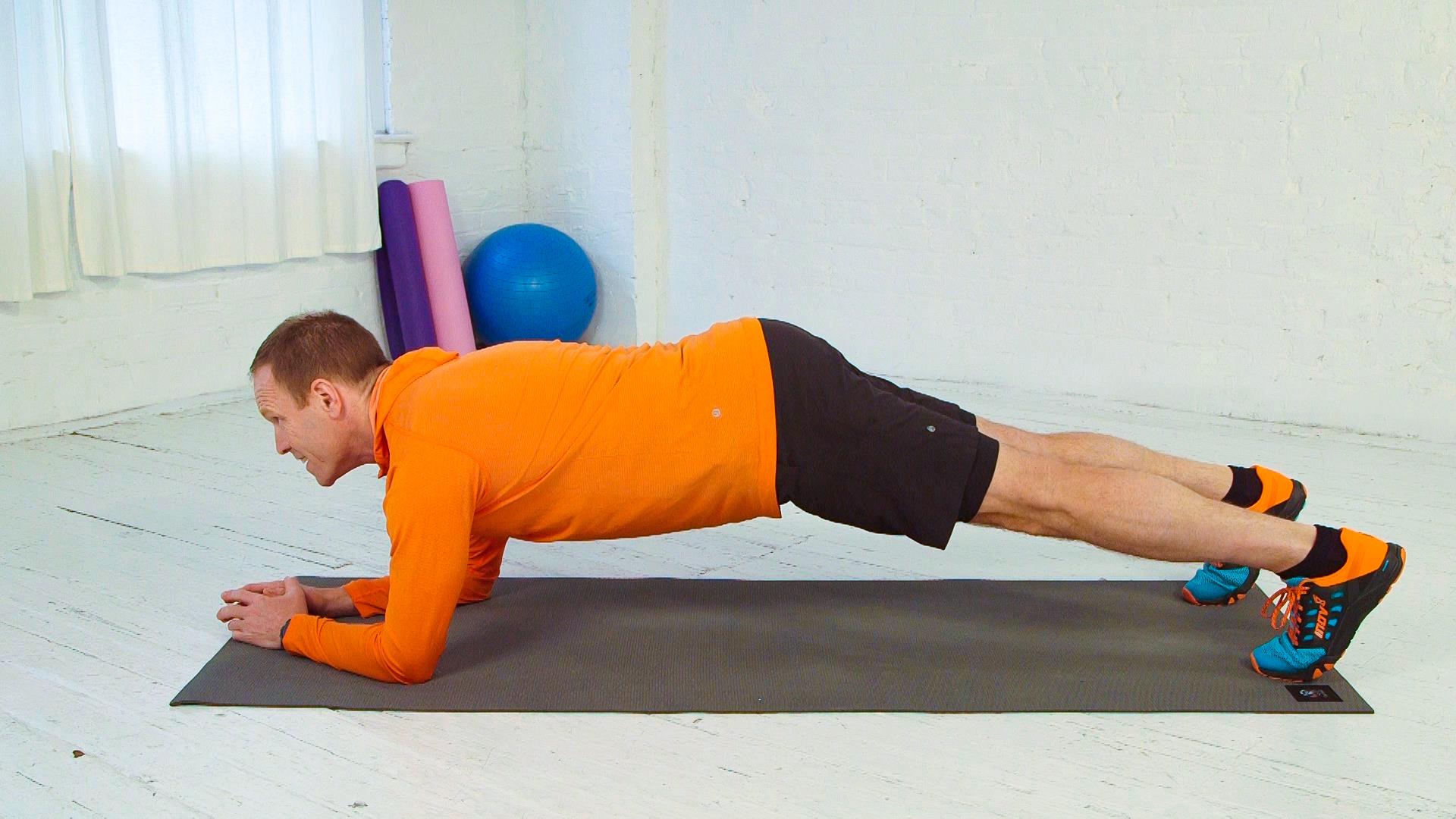Exercise – 18 Common Workout Mistakes – These simple exercise blunders could be preventing you from reaching your goals. We all want to make sure we’re getting the most out of our workouts, whether we like it or not. Bell Silverthorne, Exercise Physiologist, Wellness Coach, and Lifestyle Medicine Practitioner, discusses some common mistakes that may be affecting your workout and sabotaging your fitness goals, as well as how to correct them.
Top fitness experts reveal the most common workout mistakes that could be sabotaging your fitness goals — and how to avoid them:

1. Skipping warm-up – (Exercise – 18 Common Workout Mistakes)
“Imagine your muscles and connective tissue as a rubber band.” When you pull a rubber band in the cold, it can snap. “However, if you heat that rubber up, it becomes far more elastic and flexible,” says Jillian Michaels, a wellness coach, entrepreneur, and television personality. Warming up before exercise prepares your muscles, heart, and lungs for physical activity, reduces the risk of injury, and helps you mentally prepare for the workout ahead. When you were properly warm-up, “the temperature of your muscles and overall body rises, increasing blood flow.” This improves circulation and muscle elasticity, which can lead to an increase in range of motion. “All of these factors can help you improve your speed, strength, and endurance,” says Kira Stokes, NASM-certified celebrity trainer, and creator of the award-winning The Stoked Method. “Think of it like warming up your car on a bitterly cold day.” “When you give your car time to prepare to go from 0 to 60, it runs much more smoothly and efficiently,” she adds. Find out more about the fundamentals of proper warm-up here.
2. Not having a game plan – (Exercise – 18 Common Workout Mistakes)
According to Stokes, “starting a workout without a set plan for that particular day can lead to a lot of wasted time.” This is why it’s critical to set your intention — which includes listening to your body — in order to maximize the time you have. Furthermore, “Many workouts are missed because people do not set aside time for them and assume they will fit it in at some point during the day. So, just like a doctor’s appointment, schedule it in your calendar “the fitness instructor adds. According to Michaels, “you must do a minimum of three 30 minute workout sessions per week or four 20 minute sessions at the gym per week – with a maximum of six hours of training.” “You’ll have to put in a more conscious effort at first, but it’ll become a lot easier once it becomes a habit,” a fitness trainer and influencer says, Katie Crewe.

3. Taking your phone with you while working out – (Exercise – 18 Common Workout Mistakes)
“If you have it, you’re going to look at it, which can affect your focus, the effectiveness of your workout, and your mood,” Stokes says. “Set a limit on how frequently you’ll check it if you must have it on hand. If you like to record your workouts, do so at the end so that your flow and focus aren’t disrupted “suggests the fitness professional.
4. Static stretching before a workout.
Static stretching is a stretch that is held in a difficult position for 10 to 30 seconds. A standing shin stretch, for example, or a standing hamstring stretch. “Doing static stretches slows down your heart rate, lowers your injury risk, and helps reduce DOMS (Delayed Onset Muscle Soreness),” explains Emily Samuel, celebrity fitness trainer at NYC’s Dogpound Gym. Instead, do dynamic stretching to prepare your body for a workout, as it helps warm up your body by increasing blood flow and getting your muscles ready for physical activity, she says. A forward lunge with a twist is an example of a dynamic stretch “which warms up the thoracic spine, hips, core, and legs Alternating legs and doing about five reps with each leg is a good way to warm up “Samuel adds.
5. Overlooking recovery – (Exercise – 18 Common Workout Mistakes)
“Chase performance over soreness,” Stokes says. You don’t give your body enough time to heal and rejuvenate when you overtrain. This has a negative impact on your performance and makes your body more prone to fitness burnout and injuries. “Growth occurs during rest days when your muscle fibers have time to repair and grow stronger,” Stokes explains. This is why, if you want to maximize your performance, you must schedule rest and recovery days. Aside from rest days, splitting up your workouts is another excellent way to improve performance while allowing your muscles to recover properly. Michaels recommends muscle splits — meaning, training certain muscle groups on certain days and giving them rest on the remaining days. For example, focus on your push muscles (like chest, quads and shoulders) on Mondays and Thursdays. And then work on your pull muscles (like back, hamstrings and biceps) every Tuesday and Friday. Schedule cardio for Saturdays. And take Wednesday and Sunday off for rest and recovery.
6. Being inconsistent – (Exercise – 18 Common Workout Mistakes)
“People frequently jump from one workout to the next in an attempt to try everything. While I understand the temptation, it is preferable to develop and stick to a proper fitness routine, as consistency yields the best results “Crewe explains. While the first rule is to be consistent, the second is to use the proper technique. Select a technique that is appropriate for your current fitness level and aligns with your fitness objectives. “Running is a popular way for people to lose weight. However, running on a consistent basis only improves stamina and endurance “Samuel explains. “HIIT (High-Intensity Interval Training) is your best bet if you’re trying to lose body fat,” she adds.. In my opinion, “the most effective fitness techniques are HIIT, resistance training — preferably with free weights like dumbbells, kettlebells or barbells and bodyweight training that utilizes multiple muscle groups simultaneously like a burpee,” says Michaels. “These techniques are proven to get the best results the quickest. That’s why I have always incorporated them into my programs,” adds the celebrity fitness trainer. If you’re someone who craves more novelty, “you can switch up accessory exercises to similar ones or add one ‘free day’ into your routine where you try something new, incorporate different exercises or join a class,” suggests Crewe.
7. Getting too comfortable.
We are all creatures of habit, and we feel most at ease when we follow a routine. However, in order to optimize your performance, Stokes recommends that you are not only consistent with your routine but also consistently challenged within that routine. Your body adapts to exercise stress over time, which is why you may not see progress if you continue to do the same workout day after day. Furthermore, “when you do the same movements over and over again, it can cause overuse injuries due to repetitive stress,” Michaels explains. “This is why, every two weeks, you should up the ante a little,” she adds. For example, consider running a bit faster or adding an incline to the treadmill when you jog. Or, do your rows with 15-pound dumbbells instead of 12-pound ones. Or, use a different exercise to train the same muscle group. Whatever your fitness goal is, you should strive to get your body to do a little more to improve. “The key is to not throw all of these things at your body at once or push yourself so hard that you’re unable to recover,” says Crewe. So, be deliberate and increase the pace slowly over time. Plus, try to incorporate more movement into your daily life. Walk around more, take the stairs instead of the elevator, go for an evening stroll, etc. “Regular movement not only burns more calories but also makes you feel a lot better,” adds Crewe.
8. Skimping on fluids.
“Being dehydrated can significantly reduce your performance,” Crewe says. When you exercise, your core temperature rises above normal, putting your body under stress. “Drinking fluids keeps stress at bay,” Stokes says. Proper hydration also aids in the lubrication of your joints and the reduction of inflammation. Furthermore, “Fluids also aid in the transport of essential energy nutrients, making your workout more effective. Also, flush out metabolic waste produced during a strenuous workout “she continues. So, drink plenty of water and eat water-rich foods (like cucumber, strawberries, tomato, orange, Brussel sprouts and cantaloupe). And if your workout is particularly grueling, opt for a drink that also contains essential electrolytes such as sodium and potassium. Here’s the lowdown on how much water you should drink before, during and after exercise.
9. Insufficient fuel.
Train on an empty stomach as much as possible. Just make sure to properly time your food intake, advises Michaels. Eat something at least 45 minutes before your workout. “This provides you with the blood sugar you need for energy while preventing all of your blood from going to your stomach to digest food — which can compromise oxygen delivery to your muscles while training,” Michaels explains. Consuming carbohydrate and protein-rich foods (such as whole wheat crackers, fresh fruit, boiled eggs, or oatmeal) before a workout is a great way to get your pre-workout fuel. Getting post-workout nutrition is also critical. “Your workout sessions put stress on your body. It needs proper fuel in order to recover from that stress and grow stronger — so skipping food post-exercise will only work against you,” tells Crewe. Here’s a handy guide on what you should eat after your sweat sesh. Meanwhile, “supplementation is also something to consider,” tells Michaels. “I take Alaya Naturals Organic Green Superfood and Alaya Naturals Grass-Fed Whey Protein to boost my performance and speed up workout recovery,” adds the fitness expert.
10. Not getting enough zzz’s.
“If you want to perform at your best,” Samuel advises, “make sure you’re getting at least six to eight hours of quality sleep.” Sleep not only energizes you, but it also “facilitates muscle growth and recovery and helps keep the hormones that control hunger in check – ensuring that your efforts in the gym are not undone by poor food choices,” according to Stokes. According to Crewe, adequate sleep is also necessary for strengthening your immune system, consolidating learning and memory, improving mood, and virtually all other aspects of health. So, try to get a good night’s sleep every night. “It’s something that is worth adjusting your schedule and making sacrifices for as the benefits will be very obvious in both the short and long term,” adds the health coach.
11. Skipping foam rolling.
“Foam rolling breaks up the fascia over the muscles, which inhibit range of motion, improving mobility and flexibility,” Samuel explains. “It also increases the flow of blood and oxygen to the muscle tissue, which speeds up the healing process and relieves muscle soreness,” she adds. It should ideally be done both before and after a workout. “The most important areas to foam roll are the back, hamstrings, glutes, IT band, lats, quads, adductors, and calves,” says the fitness trainer. Simply place the foam roller in the desired area, apply pressure with your body weight, and roll slowly — once you find a “sweet spot” (a killer spot), hold it there for a few seconds and take some deep breaths,” explains Samuel. Breathing is the most important part during this process, she points out.
12. Improper gear.
Whether you do yoga, barre, kickboxing, or another type of workout, you should dress the part. “You don’t want your ability to run, jump, dance, push, pull, and move in general to be hampered by your clothing,” Stokes says. So, make sure you’re dressed appropriately for your workout and that you’re wearing appropriate footwear.
13. Pushing yourself too hard, too early
Going too hard in your first week back to exercising is not ideal if the last time you were regularly active was playing mixed social netball in 1996. Regardless of how much zeal and motivation you have summoned. It will leave you feeling extremely sore, tired, and frustrated, and it is possible that you will burn out. It’s simple. Regardless of whether you work out at the gym or walk every week, a good rule of thumb is to aim for a 10% progression each week. If you walk for 20 minutes three times a week, aim for 22 minutes the following week or try to increase the intensity if time is limited.
14. Thinking of exercise as only a weight loss tool
The majority of weight loss is due to what you eat; you can never outtrain a bad diet. If you believe that exercise is only for losing weight, you’re mistaken! Exercise is more beneficial for weight maintenance. Rather than trying to lose weight. But exercise is about so much more than just losing weight! You have fun if you choose something you enjoy. You’ll also sleep better and feel better, and it’s a great stress reliever. Exercise, in my opinion, is a free mood booster. I always feel energized after a nice brisk walk, and I enjoy listening to different podcasts that introduce me to new ideas.
15. Doing things which don’t make you comfortable
Make a plan for success. If you prefer your privacy, enrolling in a group gym fitness class is unlikely to keep you coming back for more. If you suffer from joint pain or lack mobility, riding a bike or going to the pool will be more comfortable than long walks or jogging. Finding something you enjoy doing that is also comfortable for your body is the best recipe for regular exercise.
16. Focusing on outcomes too much
Good exercise habits, like good nutrition, are a way of life, not a means to an end, and your goals should reflect this. People are much more likely to be long-term exercisers if they set attainable goals for how many times per week they will exercise. For example, if you set a goal of walking 5 kilometers in 45 minutes, what will you do when you achieve it? Should you take a break and rest on your laurels? You are more likely to stick with it if you tell yourself, “I’m going to exercise three times a week for 45 minutes each time, and do at least one strength session.” Concentrate on the process rather than the outcome.
17. Not fuelling yourself properly
You must fuel your body if you expect it to perform at its best. For optimal performance, consume a healthy pre-workout meal or snack two hours before exercise. Choose something that corresponds to the type of activity you’re performing. If you can eat a snack within an hour of exercising, you will be more satisfied and less likely to overeat at your next meal. Eating a well-balanced diet rich in protein, complex carbohydrates, and healthy fats will aid in muscle restoration and recovery.
18. Not seeing yourself as ‘sporty’
It doesn’t matter if your workout attire consists of a baggy old shirt and your favorite shorts with a few holes in them. Whether you have the latest activewear or not, you must shift your mindset to “I am an active person.” You are the only person who is preventing you from becoming more fit. Being active is something that we all need to do on a regular basis, just like brushing our teeth. Recalibrate your sense of self; you don’t have to see yourself as a super athlete, but you do have to believe that you can move every day. We’ve all got to start somewhere.
Apart from avoiding the aforementioned counterproductive habits, tracking your workout progress is also a great way to improve your performance and stay motivated.
Here’s how to track your performance effectively:
- Keep a log. Whether you use an app or go old school and keep a notebook, logging your workouts shows your progress in black and white. “Maybe you’re able to do three more push-ups than last week. Or, you finished your run 30 seconds faster. Keeping a log allows you to make comparisons as well as adjustments which provide solid motivation to stay in the game,” tells Stokes.
- Listen to your body. “Truly paying attention to how you feel throughout your workout can not only help you recognize progress, but it can also make the workout more effective,” says the fitness coach.
- Take circumference measurements. Measuring your body parts (hips, thighs, biceps) gives you a more accurate picture of your body composition. “Muscle is more dense than fat. But the scale doesn’t depict that. So, step away from the scale,” Stokes suggests.
- Use a fitness tracker. From Whoop and Fitbit to Apple Watch, there are lots of tech devices and apps out there to provide in-depth analytics to track your workouts and overall lifestyle habits. “My suggestion when using one of these devices is to limit the number of times you check the data per day,” says Stokes. “Don’t become obsessed with every step you take, but rather, look at the big picture — meaning, your overall fitness,” adds the fitness trainer.
Are You 40 Years Old and Above?
This is your specialty store. We stock healthy products that promote healthier living and longevity.
Browse through our range of products to find the one that is tailor-made for you if you’re health-conscious.
We wish you a happy, healthier, prosperous, and longer life with peace of mind!
Take the right step to enjoy them today!







Leave a Reply